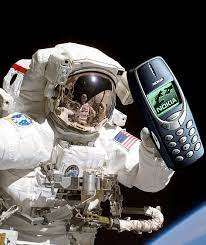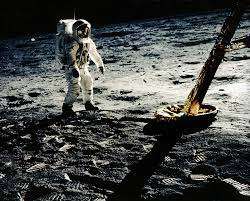The iconic images of the Apollo 11 moon landing in 1969 sparked a global fascination with space exploration. However, the technology behind those broadcasts was far from what we’ve come to expect today. The world watched in awe as astronauts Neil Armstrong and Buzz Aldrin took their first steps on the lunar surface, but the grainy, low-resolution footage was a stark reminder of the limitations of the time.

Fast forward to the present day, where high-definition live streaming is commonplace. We can connect with friends and family across the globe in real-time, sharing experiences with incredible clarity. This dramatic shift in technology has also transformed our expectations for space exploration. As we set our sights on returning to the Moon and venturing further into the cosmos, the demand for robust and sophisticated communication infrastructure has become paramount. This article delves into the ambitious quest to establish a mobile network on the Moon, a project that will enable real-time, high-resolution communication for future lunar explorers. This lunar network will be a game-changer, allowing astronauts to collaborate seamlessly, share scientific data instantly, and even connect with loved ones back on Earth – all in stunning detail.
Beyond Black and White: The Demand for High-Resolution Lunar Communication

Gone are the days when the world had to settle for blurry, black and white glimpses of the lunar surface. Matt Cosby, Chief Technology Officer at Goonhilly Earth Station in the UK, a facility that communicates with spacecraft, emphasizes the dramatic shift in expectations: “No one is going to accept the Apollo video quality.” They played a crucial role in broadcasting the Moon landing and recently received the first signal from Intuitive Machines’ Odysseus craft, marking the US’s return to the lunar surface after over 50 years.
Cosby envisions a future of unparalleled lunar exploration documented in stunning detail: “We will expect 4K resolution from the Moon almost in real time coming from the landing. It’s going to be up to 500 megabits of data coming back so the images will be 10 times better.” The rise of social media has also transformed the communication landscape. “Grainy black and white photos and videos from the Moon’s surface will be unacceptable,” he says. “We need higher frequencies to achieve that. It’s not a huge leap but it needs to be made. It’s all about investment.”
Challenges and Solutions: Establishing a Lunar Network
The investment is already underway on a global scale. Recognizing the limitations of existing technology, space agencies and private companies are pouring resources into developing a lunar communication infrastructure. Here’s a closer look at some of the ongoing efforts:
- LunarLites Project (2021-2023): Led by NASA’s Glenn Research Center in Ohio, this project evaluated how Earth’s 4G and 5G technologies could translate to the lunar environment. The success of LunarLites has paved the way for two new ongoing projects.
- Lunar Surface Propagation (LSP): This project delves into the complexities of wireless communication on the Moon. Michael Zemba, the LSP’s principal investigator, explains the added challenges compared to Earth: “The Apollo missions all landed near the Moon’s mid-latitudes. For Artemis, however, we’re interested in exploring the poles.”
NASA’s Artemis program aims for lunar orbit by 2025 and a crewed landing in 2026. The South Pole is a potential landing site due to sustained sunlight and the presence of frozen water ice, a valuable resource. However, this varied terrain also presents challenges. One potential landing zone, Shackleton Crater, is massive, with a depth of two miles and a width of twelve miles, posing difficulties for establishing traditional wireless networks.
- Regolith and Radio Waves: Another hurdle is the lunar regolith, the fine, dusty layer covering the Moon’s surface. “Regolith is more transparent to radio waves than Earth’s terrain,” says Zemba. This transparency can impact communication performance due to unseen structures like buried boulders and craters, potentially causing signal degradation or disruptions.
To address these challenges, NASA’s Desert Research and Technology Studies (Desert Rats) team conducted field tests in a desert environment to simulate lunar conditions and gather real-world data. However, the Moon’s unique orbit presents another complication.
- Earth’s Shifting View from the Moon: “From the lunar South Pole, Earth is only visible for roughly two weeks of each month,” explains Zemba. “Even when visible, it’s always less than 10 degrees above the horizon. This can lead to signal interference due to reflections off the terrain, a phenomenon called multipath.”
Overcoming Technical Hurdles: 4G, 5G, and Beyond
The allure of leveraging existing technologies like 4G and 5G for the lunar network is undeniable. Imagine seamlessly streaming high-resolution data and crystal-clear voice calls between astronauts and Earth – a stark contrast to the crackly, low-fidelity transmissions of the Apollo era. However, the harsh lunar environment throws a wrench into this seemingly straightforward adaptation. NASA’s Lunar Third Generation Partnership (3GPP) is at the forefront of tackling these challenges.
Raymond Wagner, the project’s lead investigator, paints a clear picture of the difficulties: “Wireless systems face numerous challenges on the lunar surface. Temperature extremes can plummet to negative 260 degrees Celsius or soar to 120 degrees Celsius, far exceeding the tolerances of commercial-grade electronics. Additionally, the lunar surface is bombarded by radiation, which can damage sensitive circuitry over time.”
Wagner emphasizes another crucial hurdle: “Furthermore, we need a better understanding of the lunar surface’s radio frequency propagation environment.” Unlike Earth’s atmosphere, the Moon is a vacuum. Radio waves travel differently in this environment, and the presence of craters, mountains, and the ever-present lunar dust (regolith) can all affect signal strength and clarity. Imagine trying to establish a reliable Wi-Fi connection in a constantly shifting landscape of craters and dust dunes!
These challenges necessitate a multi-pronged approach. Engineers are developing specialized hardware that can withstand the lunar extremes. This “hardening” process involves robust shielding and temperature regulation to ensure the network’s functionality. Additionally, researchers are meticulously studying the Moon’s radio frequency landscape through simulations and potential lunar missions.
Establishing a reliable 4G or 5G network would revolutionize lunar exploration. Here are just a few of the benefits astronauts would enjoy:
- Seamless Communication: Imagine astronauts on future missions being able to communicate clearly and instantly with mission control and fellow crew members, regardless of their location on the lunar surface. This would be crucial for real-time coordination, emergency response, and scientific collaboration.
- High-Definition Science: A robust network would allow for the transmission of high-definition imagery and video in real-time. Sharing the awe-inspiring beauty of the lunar landscape or the progress of a scientific experiment with the world, all in exceptional clarity, would foster public engagement and inspire future generations.
- Streamlined Data Flow: Streaming data from rovers, instruments, and other equipment seamlessly would enable scientists on Earth to analyze information as it’s collected. This real-time access would revolutionize our understanding of the Moon and accelerate scientific discovery.
The quest to establish a lunar mobile network is a testament to human ingenuity and our desire to push the boundaries of exploration. By overcoming these technical hurdles, we can pave the way for a new era of lunar research and communication. A future where the Moon is no longer a distant image on a screen, but a dynamic and connected world, brought to life through the power of a lunar mobile network.
Related Topics:
- https://www.micro2media.com/cloud-computing-for-a-sustainable-future-reducing-your-it-footprint/
- https://www.micro2media.com/island-gems-preserving-the-worlds-most-stunning-paradises-for-future-generations/
- https://www.bbc.com/future/article/20240308-talking-on-the-moon-the-quest-to-establish-lunar-wifi
- https://www.livescience.com/61874-moon-to-get-mobile-network.html#